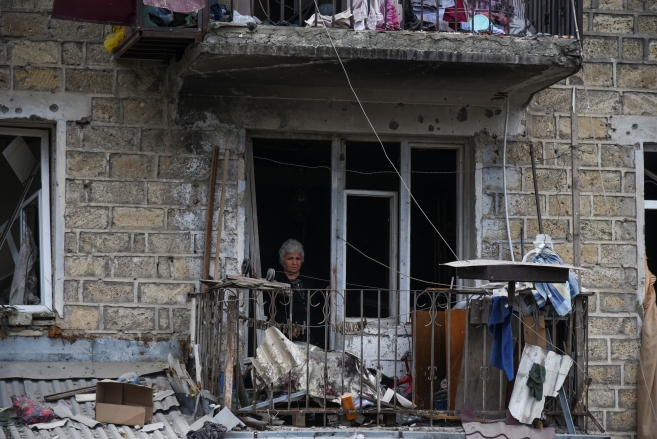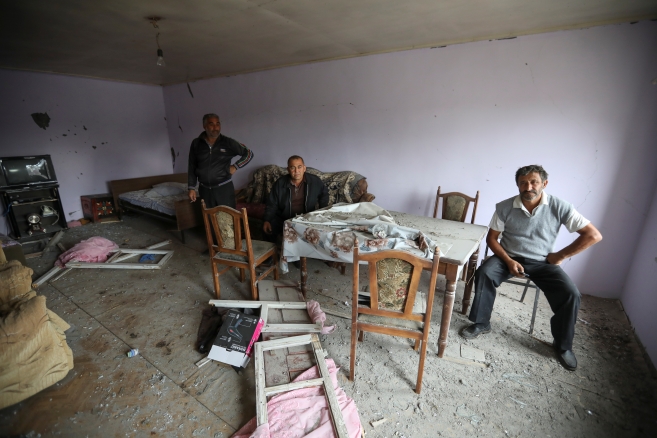
Aftermath of recent shelling during a military conflict over the breakaway region of Nagorno-Karabakh in Stepanakert October 4, 2020. David Ghahramanyan/NKR InfoCenter/PAN Photo/Handout via REUTERS
The use of heavy explosive weapons in the cities of Ganja and Stepanakert, and other towns and populated areas in the Nagorno-Karabakh conflict is killing and injuring civilians, and destroying vital infrastructure.
INEW calls on all parties to the conflict to stop the use of heavy explosive weapons in towns, cities and other populated areas due to the high risk of harm to civilians, and amid rising civilian casualties.

Men sit in a room among debris after shelling in the fighting over the breakaway region of Nagorno-Karabakh in the village of Garagoyunlu, Azerbaijan, October 4, 2020. REUTERS/Aziz Karimov
The International Committee of the Red Cross reports that hundreds of homes and infrastructure including hospitals and schools, as well as roads, electricity, gas and communications networks, have been destroyed or damaged by heavy artillery fire and by airborne attacks using missiles forcing families to leave the towns and find shelter.
Every year tens of thousands of civilians are killed and injured by bombing and shelling in urban and other populated areas using weapons designed for use in open battlefields. Many more civilians experience life-changing injuries, and suffer from destruction of homes, hospitals, schools and vital services. The use of explosive weapons is also one of the main catalysts of forced displacement, as civilians flee for safety. Unexploded ordnance left behind after a conflict has ended further impedes the safe return of civilians.
The bombing and shelling in these towns and cities highlights the needs for new international standards against the use of heavy explosive weapons in towns and cities. Heavy explosive weapons are those with wide area effects, and include weapons that produce a large blast area or spread fragments widely, weapons that deliver multiple munitions that saturate a large area, such as multiple-launch rocket systems, and inaccurate weapons where the effects of the weapon extend beyond the target. When used in cities and towns where there are concentrations of civilians, the risk of harm to civilians is great

Civilians gather in the basement of a building used as a bomb shelter during a military conflict over the breakaway region of Nagorno-Karabakh in Stepanakert, September 30, 2020. Vahram Baghdasaryan/Photolure via REUTERS
Over 100 countries have recognised the harm caused to civilians from the use of explosive weapons in cities, towns and other populated areas. States have started discussions on the development of new international standards to adopt stronger rules against attacks using heavy explosive weapons in cities, towns and other populated areas, under the leadership of Ireland. INEW calls upon states to include in the elaboration of a political declaration, a commitment to avoid use of explosive weapons with wide area effects in populated areas.
